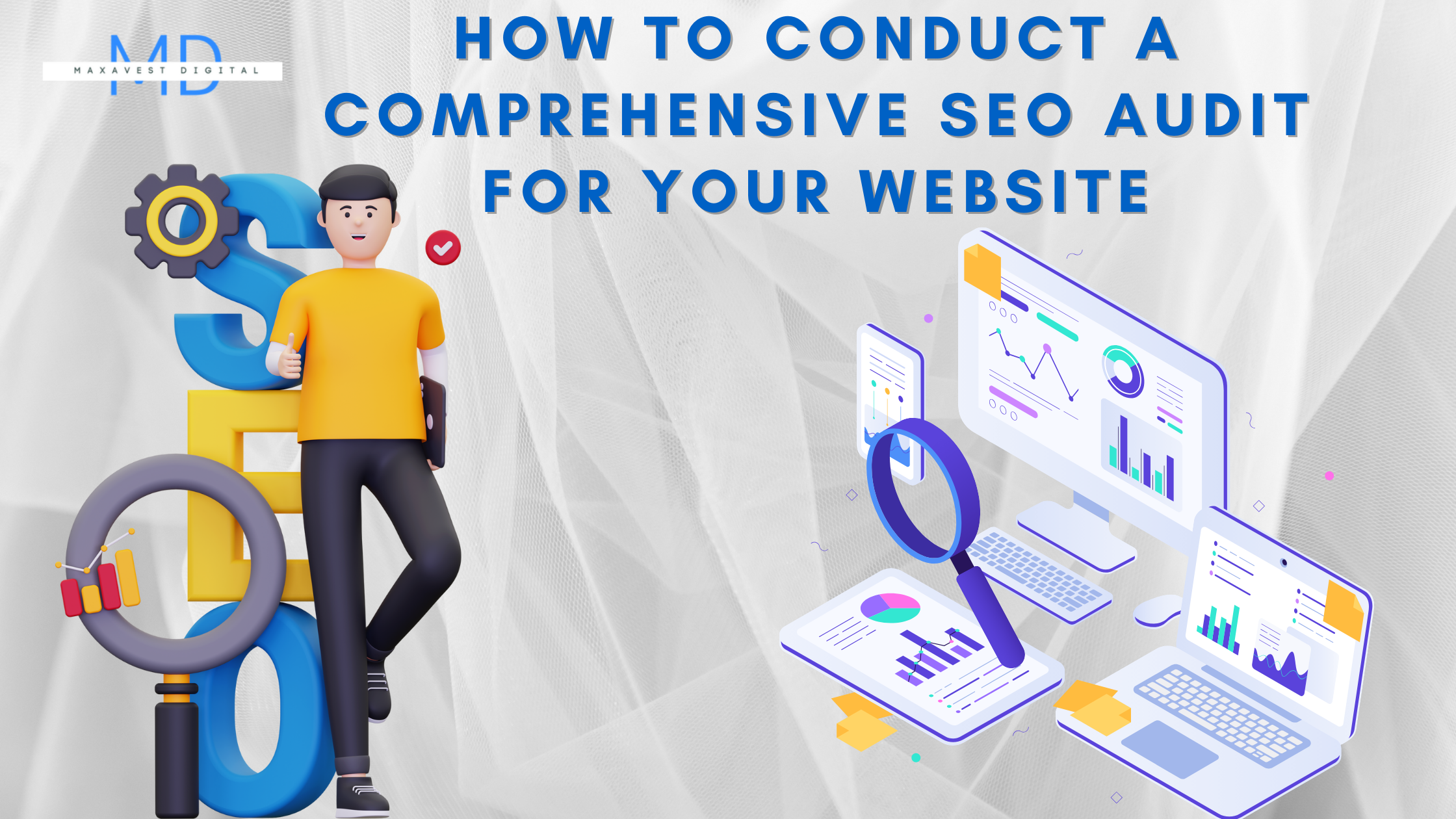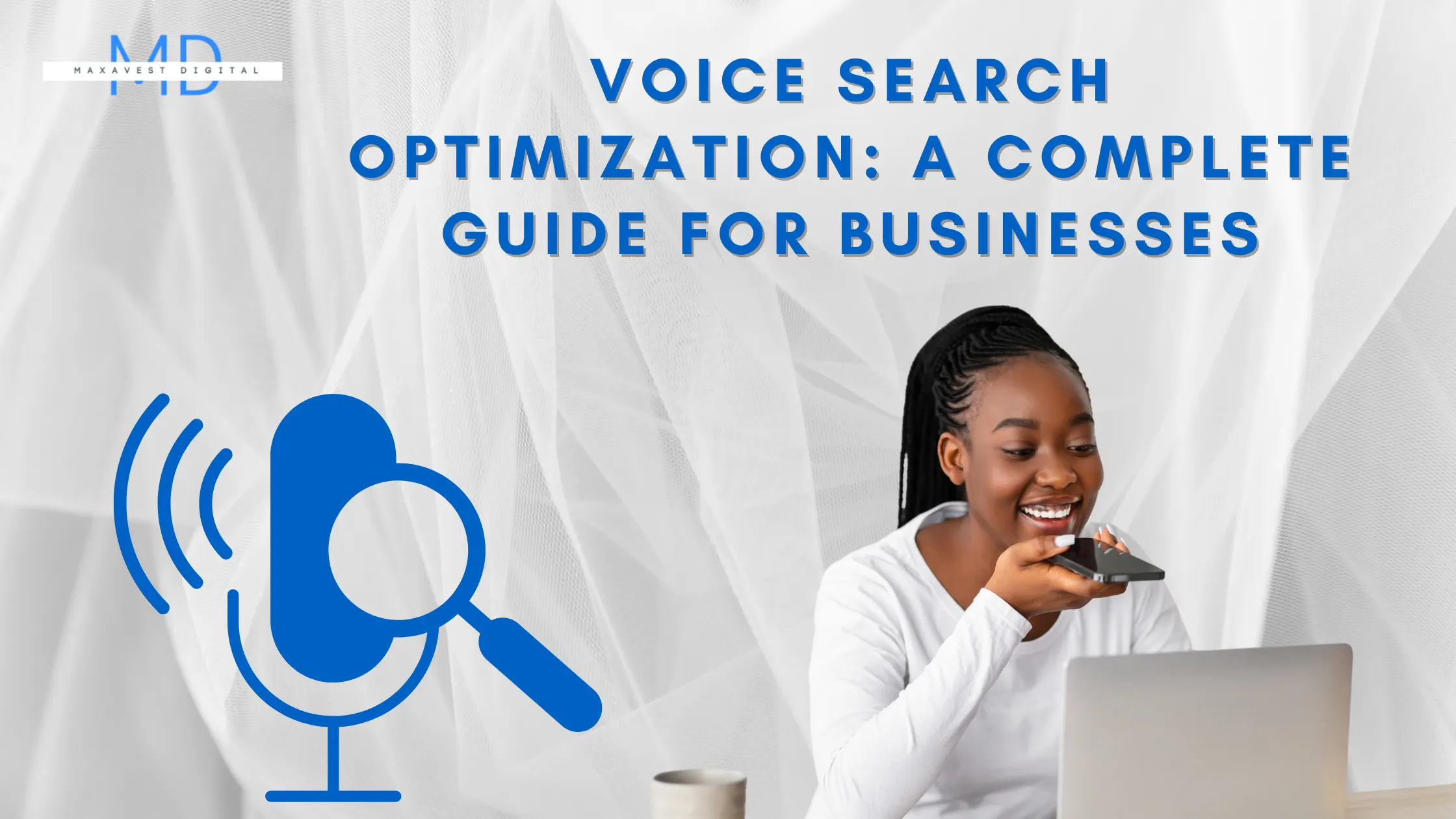How to Conduct a Comprehensive SEO Audit for Your Website
Discover how to conduct a comprehensive SEO audit for your website and fix the hidden issues that are limiting your organic traffic growth.

By Gbenga Akinyemi
Introduction: Why an SEO Audit is Essential for Your Website's Success
A successful website thrives on its ability to attract and engage visitors. However, without a clear understanding of how well your site is optimized for search engines, you could be losing out on potential traffic. This is where an SEO audit becomes essential. An SEO audit helps you identify weaknesses in your website’s architecture, content, and performance, offering actionable insights to enhance visibility, boost rankings, and improve the overall user experience. Conducting regular SEO audits ensures that your site remains competitive and aligned with the ever-evolving search engine algorithms.
Understanding the Basics of SEO Audits: What You Need to Know
Before diving into the nitty-gritty of SEO, it’s important to grasp the foundational concepts of an SEO audit. Essentially, it’s a comprehensive examination of your website’s overall performance concerning search engine optimization best practices. This process involves scrutinizing technical SEO factors, on-page and off-page SEO elements, content quality, and user experience. The goal is to uncover issues that may be hindering your website from ranking higher on search engine result pages (SERPs) and to discover opportunities for improvement.
Pre-Audit Checklist: Tools and Resources You'll Need
Embarking on an SEO audit requires a robust toolkit. Tools like Google Analytics, Google Search Console, and Screaming Frog are indispensable for gathering data and pinpointing issues. SEMrush or Ahrefs are equally powerful for evaluating backlinks, while PageSpeed Insights helps in assessing your website’s load speed. Additionally, mobile-friendly test tools and keyword research tools like Ubersuggest or Moz can aid in refining your strategies. Being equipped with the right resources will allow you to dive deep into the audit without missing critical insights.
Analyzing Website Performance: Where to Start Your SEO Audit
The first step in your SEO audit is to gauge the overall performance of your website. You can begin by examining metrics such as organic traffic, bounce rates, and session duration. Tools like Google Analytics can offer a wealth of information about how users are interacting with your site. Look at patterns—are visitors dropping off after landing on certain pages? Are there specific pages driving the most traffic? A deep dive into performance analytics will give you a starting point for identifying what’s working well and what needs improvement.
Evaluating Your Website’s Core Web Vitals: Speed, Responsiveness, and Stability
Google’s Core Web Vitals have become crucial in determining how your website is perceived by both users and search engines. These metrics—loading performance (LCP), interactivity (FID), and visual stability (CLS)—are signals that directly influence your SEO. A fast, responsive, and stable website isn’t just preferred by visitors; it’s a necessity for higher rankings. Run diagnostics using Google’s PageSpeed Insights to identify slow loading times, unresponsive elements, or unexpected layout shifts. Improving these will not only boost SEO but also enhance the user experience.
Mobile-Friendliness Check: Ensuring Your Website is Optimized for All Devices
With mobile-first indexing being a standard practice for Google, ensuring your website is optimized for mobile devices is crucial. Conduct a mobile-friendliness test to assess how well your website adapts to smaller screens. Look for issues like text that’s too small to read, elements that are too close together, and pages that don’t scale properly. A mobile-optimized site improves both user engagement and search rankings, as it allows for seamless navigation across devices, catering to the growing population of mobile users.
Conducting a Technical SEO Audit: Identifying Structural Issues
Technical SEO is the backbone of any successful audit. It involves analyzing your website’s architecture, including its crawlability and indexability by search engines. This step ensures that search engines can access, understand, and rank your pages efficiently. Run a crawl using tools like Screaming Frog to uncover structural issues such as broken links, orphan pages, or redirect chains. Addressing these issues will improve your site’s overall health, ensuring that both users and search engine bots can navigate your content effortlessly.
SEO in 2024: New Ranking Factors You Should Know About
How to Fix Crawl Errors and Broken Links for Better Indexing
Crawl errors and broken links can severely impact your site’s SEO performance. Crawl errors, identified through Google Search Console, occur when search engines can’t access certain pages on your site. Broken links, on the other hand, lead users and search engines to non-existent pages, resulting in poor user experience and lost opportunities for ranking. Fixing these involves locating the errors, updating or removing broken links, and resubmitting pages for indexing. Regularly addressing crawl errors ensures that all parts of your website are discoverable by search engines.
Enhancing Website Security: The Importance of HTTPS in SEO
Google places a high premium on secure websites, and this is where HTTPS comes into play. Having an SSL certificate is not just about protecting user data; it’s also a ranking factor. Websites using HTTPS appear more trustworthy, and search engines reward this with better rankings. If your website is still operating on HTTP, it’s time to make the switch. Not only will this protect your users’ sensitive information, but it will also enhance your SEO credibility in the eyes of search engines.
On-Page SEO Review: How to Audit Meta Tags, Titles, and Descriptions
On-page SEO elements, such as meta tags, titles, and descriptions, are integral to how search engines interpret your content. Conducting an audit of these elements will help ensure they are optimized for relevant keywords and are accurately reflecting the content on the page. Each title should be unique, compelling, and keyword-optimized, while meta descriptions should provide a concise summary that entices clicks. Well-crafted meta tags serve as the first impression for both users and search engines, influencing click-through rates and rankings.
Keyword Analysis: How to Audit Your Current Keyword Strategy
Keyword relevance evolves as user intent shifts, making it important to regularly audit your keyword strategy. Analyze which keywords are driving traffic, ranking poorly, or have become obsolete. You might find opportunities to target long-tail keywords or discover that some terms are too competitive. Conducting keyword research helps ensure that your content remains aligned with the search queries that are most important for your audience, improving both your content’s visibility and its ability to satisfy search intent.
Optimizing Header Tags: How to Structure Your Content for SEO
Headers (H1, H2, H3, etc.) are crucial for organizing your content and signaling the hierarchy of information to search engines. Ensuring that your header tags are optimized with relevant keywords and properly structured enhances the readability and SEO of your content. The H1 tag should serve as the main title of the page, while subsequent tags (H2, H3, etc.) should break down sections in a logical order. Optimizing headers not only helps search engines understand your content better but also improves the user experience by making your content easier to digest.
Content Audit: Ensuring High-Quality, Relevant, and Fresh Content
Content remains one of the most significant ranking factors for search engines. Performing a content audit involves evaluating your site’s existing content to ensure that it is up-to-date, relevant, and valuable to your audience. Identify outdated or underperforming content and either refresh it with new information or remove it entirely. High-quality content should be well-researched, optimized for the right keywords, and answer the search intent of your users. This helps in boosting engagement and increasing the likelihood of being ranked higher by search engines.
How AI is Changing SEO: What Businesses Need to Know
How to Identify and Eliminate Duplicate Content Issues
Duplicate content is a major issue that can dilute your website’s SEO performance. Search engines prefer original content and may penalize websites with identical or similar content across multiple pages. Use tools like Siteliner or Copyscape to identify any duplicate content on your site, whether it’s across your domain or duplicated from other websites. Once found, either rewrite or consolidate the content to maintain uniqueness. Ensuring that each page offers value will help prevent cannibalization of your rankings.
Image Optimization: Best Practices for SEO-Friendly Media
Images are an often overlooked element in SEO but can have a substantial impact when properly optimized. Ensure that all images on your site are compressed to reduce load times, have descriptive file names, and include alt text that incorporates relevant keywords. Alt text not only helps with SEO but also improves accessibility for users who rely on screen readers. Additionally, using the appropriate image format (JPEG, PNG, WebP) can further enhance page load speed, positively influencing both user experience and SEO rankings.
URL Structure and SEO: How to Make Your URLs Clean and Descriptive
A well-structured URL is not only easier for users to read but also more favorable to search engines. Ensure that your URLs are clean, concise, and descriptive, avoiding unnecessary characters or lengthy strings. Use hyphens to separate words, and try to incorporate your target keyword into the URL where it makes sense. A good URL structure enhances navigation, improves search engine crawling, and ultimately boosts SEO.
Off-Page SEO Review: Assessing Your Backlink Profile and Domain Authority
Off-page SEO is largely about your backlink profile. High-quality backlinks from reputable websites act as a vote of confidence, signaling to search engines that your site is trustworthy and authoritative. Use tools like Ahrefs or Moz to analyze your current backlink profile and identify areas for improvement. Focus on acquiring backlinks from high domain authority sites and ensure that your existing links are coming from relevant, high-quality sources. Regularly monitor your backlinks to prevent toxic links from harming your SEO.
How to Perform a Competitor SEO Analysis: Learn from the Competition
Your competitors are often a goldmine of information when it comes to SEO. Performing a competitor analysis allows you to understand where your competition is excelling and where they’re falling short. Analyze their keywords, backlink strategies, and content structure. Identify gaps that you can exploit, whether it’s targeting underutilized keywords or producing better, more in-depth content. Learning from your competitors' successes and mistakes can help you refine your SEO strategy and gain a competitive edge.
Auditing Your Website’s Internal Linking Strategy for Better Navigation
Internal links play a significant role in SEO by helping search engines crawl your site more effectively and distributing link equity throughout your site. Conducting an audit of your internal linking strategy involves ensuring that each page is well-connected to others and that important pages are easily accessible. Avoid orphan pages and ensure that you’re using keyword-optimized anchor text for your links. A well-structured internal linking system improves both user experience and search engine crawling efficiency.
Improving User Experience (UX): Why It’s a Crucial Part of SEO
User experience is not just about aesthetics; it’s a critical component of SEO. If your site is difficult to navigate, slow to load, or visually overwhelming, users will bounce—impacting your rankings. Improving UX involves creating an intuitive layout, speeding up load times, and making sure your site is responsive across all devices. A seamless user experience increases dwell time and decreases bounce rates, sending positive signals to search engines and ultimately improving your SEO performance.
Tracking SEO Metrics and KPIs: How to Measure the Effectiveness of Your Audit
After completing your SEO audit, it’s essential to track key performance indicators (KPIs) to measure the impact of the changes you’ve implemented. Track metrics like organic traffic, keyword rankings, bounce rate, and conversion rates to assess how well your SEO efforts are working. Regularly monitoring these metrics will help you identify new areas for improvement and ensure that your SEO strategy remains aligned with your business goals.
Action Plan: Implementing Changes from Your SEO Audit Results
An audit without actionable steps is just data. Once you’ve completed your SEO audit, it’s time to implement the necessary changes. Prioritize tasks based on their potential impact—fixing critical issues like broken links or crawl errors should come first, followed by improvements to on-page SEO, content optimization, and technical SEO enhancements. Develop a timeline for implementation and ensure that each task is properly tracked to monitor its effect on your site’s performance.
Conclusion: Maintaining SEO Health with Regular Audits and Updates
SEO is not a one-time effort; it’s an ongoing process that requires regular attention and fine-tuning. Regular SEO audits help you stay on top of algorithm changes, user behavior shifts, and evolving industry trends. By making SEO audits a routine part of your website maintenance, you can ensure sustained growth, improved rankings, and a website that continually delivers value to both users and search engines.


























